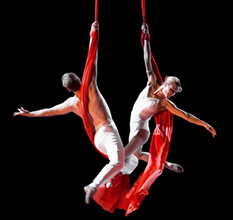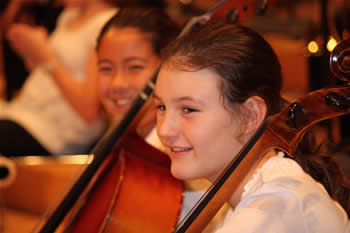Concerts at St. Matthias Episcopal Church come nearly one a week nowadays, and the audiences continue to show up in highly respectable numbers. A well-selected program on Sunday drew an estimated 75 or 80 aficionados of chamber music. Guided by flautist Kate Steinbeck, assisted by pianist Polly Feitzinger and including Michael Jones on oboe and English horn, the one-hour program delighted the audience with five selections.
Claude Debussy’s 1913 composition “Syrinx” is for solo flute. This is a lament, depicting the wood nymph Syrinx escaping from the satyr Pan. Ms. Steinbeck’s warm sound was enveloping us in appropriate wistfulness when it was interrupted first by the loud footsteps of a late-arriving patron and then by a cell phone’s merry tune. Tedious as it may seem, I guess we need to remind people at the beginning of every concert to turn off their electronics.
Next came a Swedish folk tune, a “Walking Tune,” in an arrangement for English horn and piano by Laurence Perkins. It was simplicity itself, and showcased the sonorities of the double reed instrument.
Julie Ann Giacobassi, formerly English horn player of the San Francisco Symphony, transcribed the Lute Suite in E minor of J.S. Bach for flute and English horn. My personal taste favors this transcription to the original work on lute. Ms. Steinbeck and Mr. Jones performed two movements (Allemanda and the familiar Bouree) in a very satisfying manner. The modern wooden flute is particularly appealing in works such as this, when it blends so beautifully with other woodwind instruments, better than the modern orchestral silver flutes.
Madeleine Dring’s Trio for Flute, Oboe and Piano is a three-movement work by a multi-talented British woman who studied composition with Ralph Vaughan Williams and had a relatively short life (1923-1977). I heard the complete work a few years ago in a disappointing performance where the subtleties of the first two movements were obscured. What a pleasure it was at Sunday’s concert, then, to hear three players do justice to the gorgeous romantic middle movement (Andante semplice) and the final movement (Allegro giocoso) with its hurdy gurdy passages and its “nyah nyah” flippant humor. My only regret was that the players did not give us all three movements. This is a brilliant piece that deserves frequent and full exposure.
The final work on the program was Five Miniatures, a 1948 suite by William Grant Still (1895-1978). A very thoughtfully constructed yet light-hearted suite, it uses thematic material from Mexico, Peru and the USA. Three of the movements are based on familiar themes from our own country, but they are disparate: the very frontiers-savvy “I Ride an Old Paint,” the Negro Spiritual “Jesus is a Rock” and the children’s song “A Frog Went A-Courtin’.” So much of the output of this pioneering African-American composer seems to me to be pedantic and excessively formal, and by contrast I was delighted to hear this suite’s light touch. It is one of the most attractive works by Still that I have heard.













